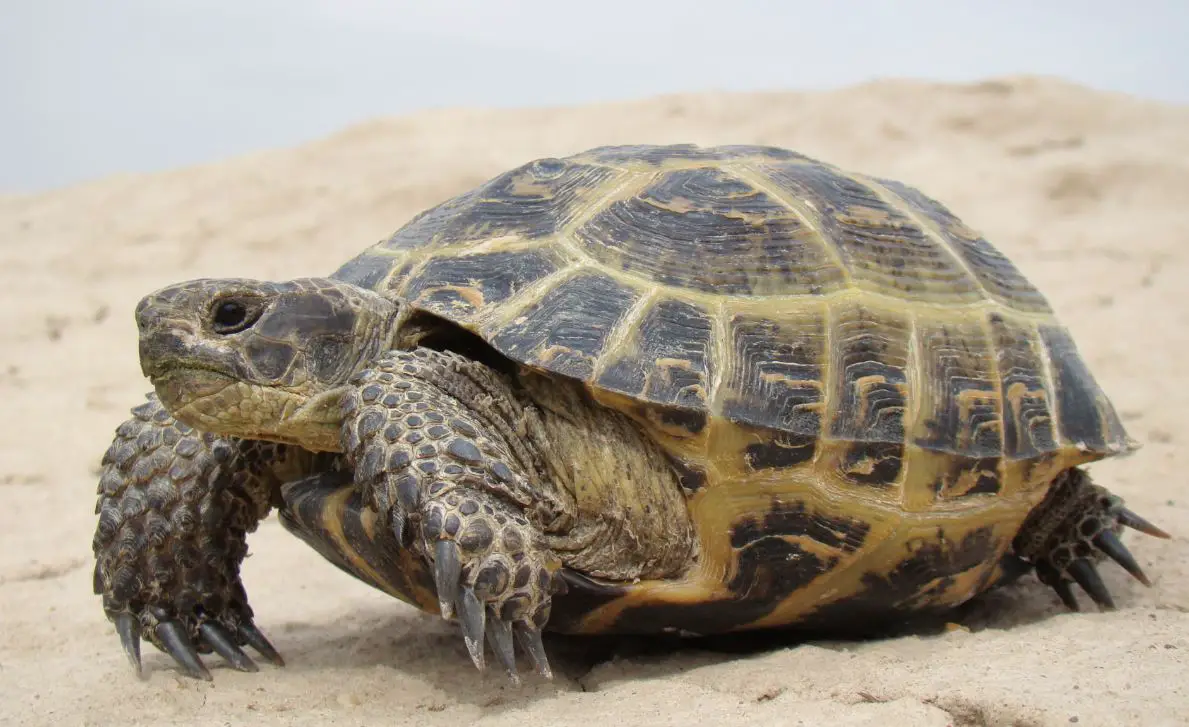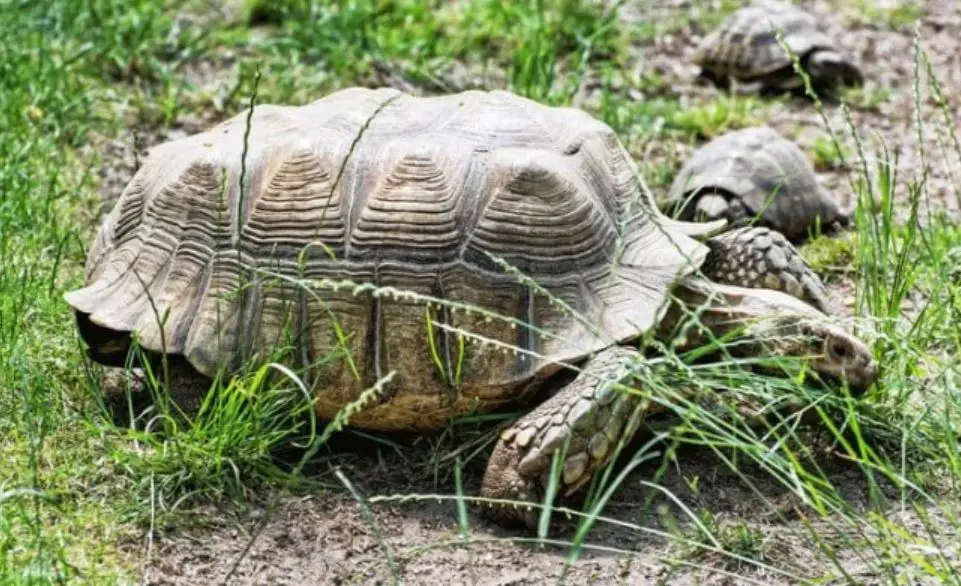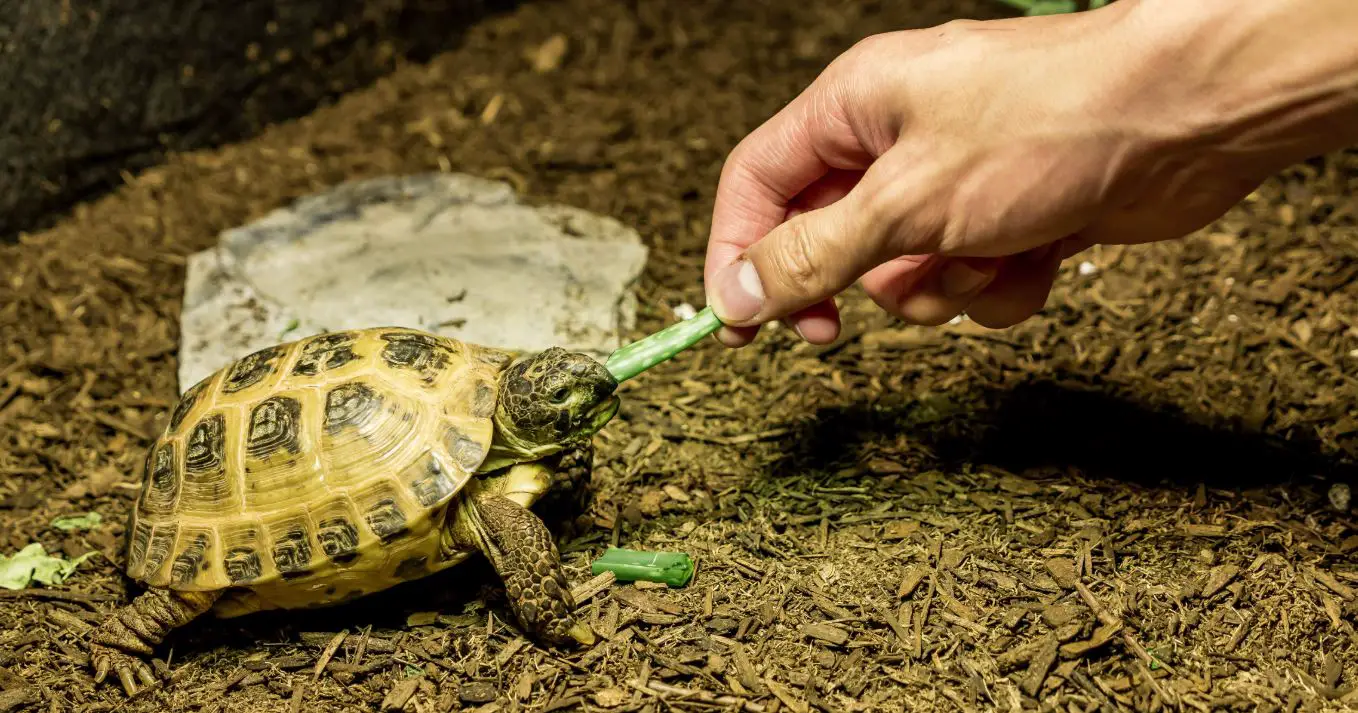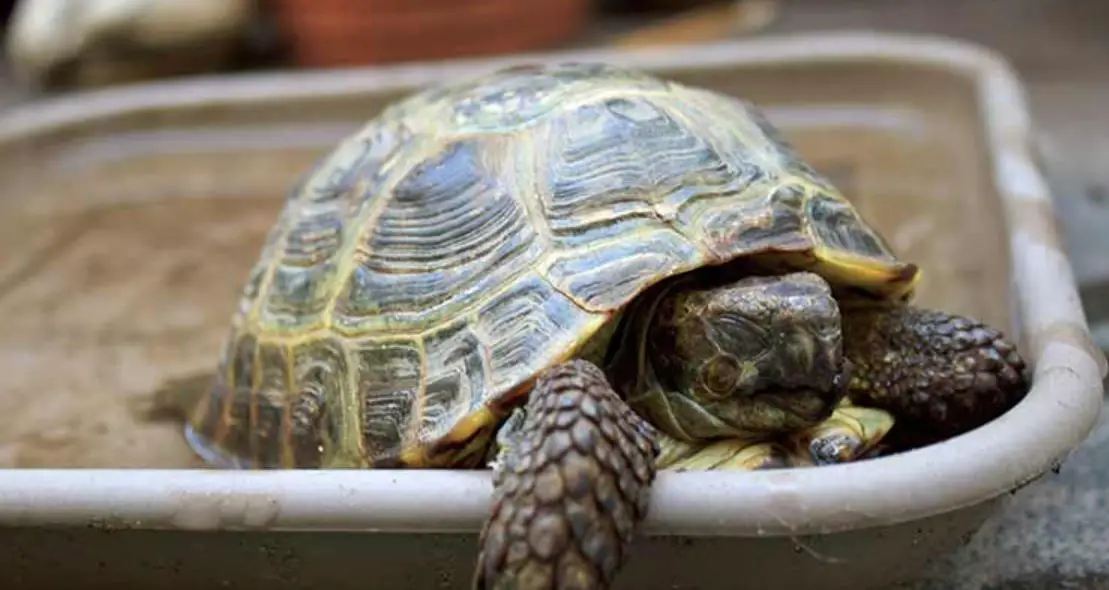Russian Tortoise Facts – Must Read Guide For Prospective Owners

Russian tortoises, as the name suggests are popular animals in Russia and the surrounding areas.
These animals are smaller than many of the larger tortoises and are often imported into the United States as pets. There are often identified by having a reddish-brown or even a black shell.
Let’s take a look at something interesting facts about these Beautiful Creatures.
They Only Grow To 10 Inches
Many of the larger tortoises will grow to 40-in and beyond. The Russian tortoise is much smaller and a fully grown adult might reach 10 to 12 inches.
The female might be larger than the male buy 1 to 2 inches and a newly hatched Russian Tortoise might only be one inch in length.
The smaller size is one of the factors contributing to why they are so popular to keep as pets and they often arrive in America as young adults between 4″ and 6″ in length.
There Live for 50 years
It’s no secret among tortoise lovers that they have long life spans and while some giant tortoises might live for 250 years, the Russian variety has a lifespan closer to 50 years respectfully.
Due to its long lifespan, keeping one as a pet is a massive undertaking for the long term and you really need to plan your whole life with the Tortoise in mind.
They Go By Many Different Names

Not just known as the Russian tortoise but also referred to as the Afghan tortoise, central Asian tortoise, Horsefield’s tortoise, Steppe tortoise, Four-Toed Tortoise and the Russian Box Turtle.
Despite all the names of most commonly referred to as the Russian tortoise.
They’re Not Just Found In Russia
As you may have guessed from all the names, these animals are not just found in Russia but also Afghanistan, central Asia, Pakistan and the United States were they are kept as pets.
They Are Diurnal
Russian tortoises prefer to be active during the day which is another reason they make great pets.
They Are Social Creatures
This means they would like to to stay in groups and in the wild they will often sleep together in groups of 5 or 6 in what could be considered house parties for wild Russian tortoises.
While most tortoises are solitary creatures, they will bond and grow affectionate towards their owners and carers to point where they might even enjoy a neck rubbing and some gentle petting.
They Love To Climb And Dig
Tortoises are very territorial by nature and they love to patrol their territory. They love to climb and dig so you should accommodate these needs within their enclosure.
Because they are so territorial, when you move them into a new enclosure, they will often try to climb or dig their way out so they can return to their previous territory.
You should provide them bedding, water and clean soil to ensure that they can dig in their enclosure and their homes should be cleaned once a week to ensure long-term health.
We are big fans of hemp bedding for pets.
They Are Resistant To Temperature Extremes
In the wild, they are often found in deserts where it is hot during the day and cold at night.
They will dig burrows so they can avoid the extreme cold temperatures. 5 or 6 of these animals can spend the night in a single borough.
If the temperature gets too hot like in the midday sun, they will also dig and borrow to escape those temperature extremes in either direction.
Placing a heating lamp in their enclosure where one spot is hotter than the rest will allow them to move between temperatures to where they feel the most comfortable.
Only 4 Toes Compared To 5 With All Other Tortoises
Another interesting fact is that while most tortoises have five toes, the Russian variety only has 4.
It is hard to know whether this is due to evolution or some other reason.
They Hibernate In Cold Weather
In the wild, Russian tortoises may only be active for 3 months out of the year. The hibernate during cold weather and when food is scarce in their natural habitat.
They do this out of necessity and it is not something they have to do.
If you maintain stable temperatures throughout the year in captivity, they won’t hibernate or miss a beat and it will not have any negative health impacts on them.
They Have An Extremely Accurate Body Clock
Their Body clock is particularly sensitive to changes between light and dark and I will be most comfortable if you give them 12 hours of brightness and 12 hours of Darkness each day from Maximum health and happiness
They Are Herbivores

Russian tortoise enjoy a varied diet of dark leafy greens in the wild and they should have a similar diet in captivity. Vegetables such as lettuce, kale, mustard greens and beet greens are all excellent for your pets health.
You can also include carrots, squash and peppers and they also love to eat fruits as an occasional treat like apples and figs.
It is also important to make sure these animals are getting all the vitamins and minerals. Supplying them with a multivitamin including Vitamin D, calcium and iron will be a great way to ensure long-term health. They can also eat grass and hay that will be fed to livestock as part of a balanced and varied diet.
Enjoy Their Space
Keeping these intelligent creatures in a small space is cruel and you should give them as much space as possible in their enclosure to ensure that at they are healthy and happy. If you can keep them outside during the warmer times of the year like summer, they will be very happy for the fresh air and natural light.
Growing various plants like dandelions and lettuce in the outdoor enclosures is a great way to make them feel at home and provide them with a good source of food at the same time.
They Love To Test Their Surroundings And Try To Escape
The Russian Tortoise is inquisitive by nature and can be destructive in there exploring. Make sure you don’t put anything that’s flimsy or destructible in their enclosures as they will likely test everything out for stability and it will be a case of survival of the fittest.
Also make sure that the enclosure is secure and that they can’t find a way to climb out or dig under to escape.
They Can Survive For 2 To 3 Years Without Food
Russian tortoises are extremely tough and resilient, in the wild they can survive without food for 2 to 3 years. This is not recommended and you should provide them with a constant supply of suitable foods in captivity.
They Don’t Need Much Water
But the same token, these desert animals are extremely good at storing water throughout dry periods in the wild. It should however be bathed it at least once a week in captivity and once a day as infants.
Absorb Water Through Their Tail

Russian tortoises absorb water through vents in their tail and that is what is important to bathe them frequently.Water is very important to these creatures so it’s always important that have a clean supply water in their enclosure, just make sure they don’t go into it as they will urinate and bathe in the water making it dirty
They Can Bite
These animals are gentle and docile in nature but they can bit when they feel threatened or are in a bad mood. Their victims can include other tortoises, various pets and even humans, for whatever reason, if they get the opportunity.
Conclusions
All in all, these are good pets to keep, their lives span a number of decades, they bond with their owners and are affectionate. It takes a bit of skill to build a quality enclosure and maintain it and to keep these animals and good health so only take on the task if you are confident in your abilities to care for these amazing creatures.


